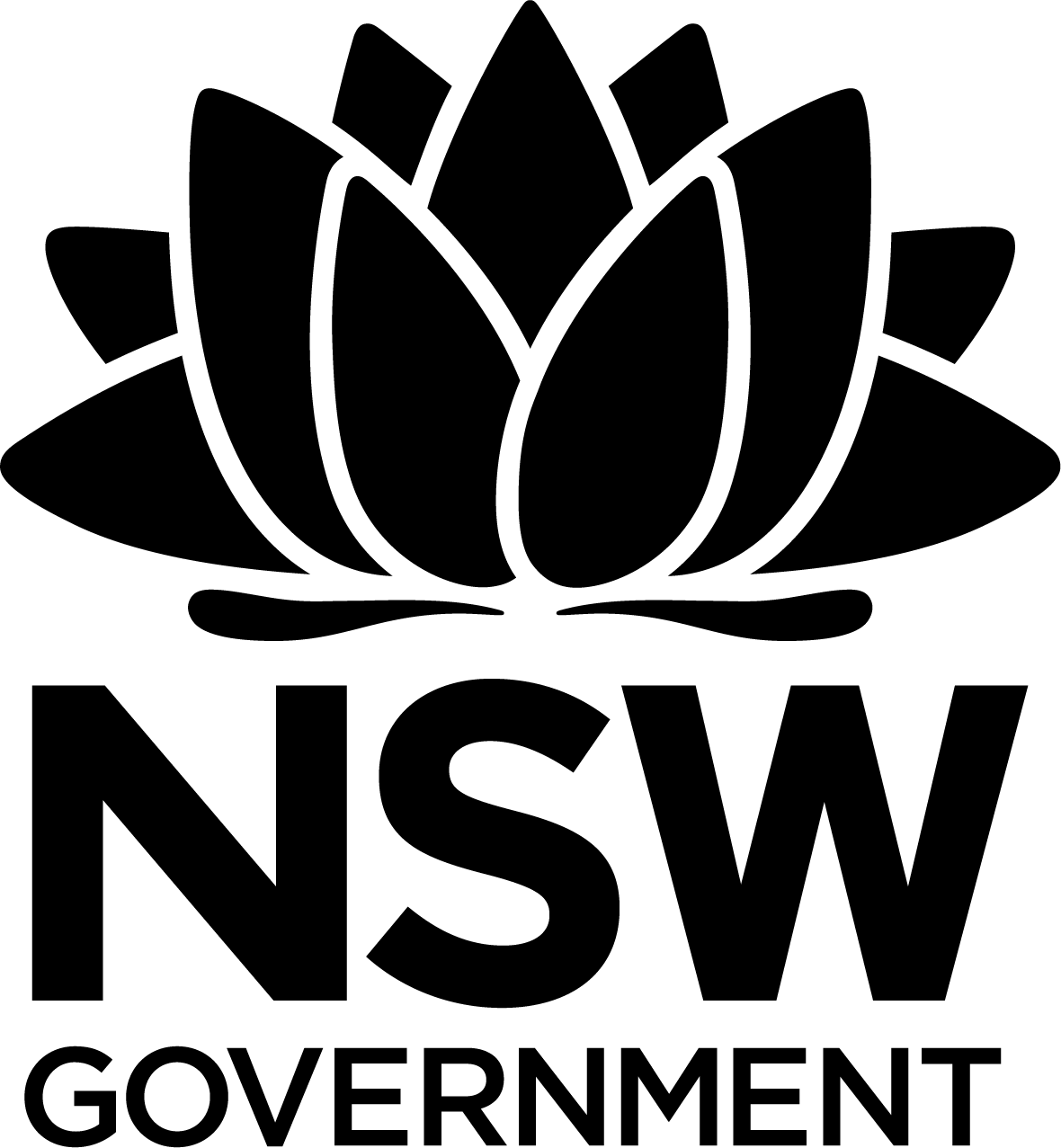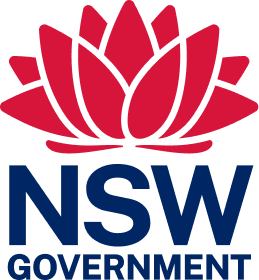
Crown land manager resource
Council Crown land manager
Every local council participates in the management of Crown reserves as an appointed Crown land manager (CLM). Together, councils manage around 6,500 Crown reserves across NSW. CLMs have a crucial role to play in the care, control and management of Crown reserves and need to consider a range of legislation. Crown Lands has published a short video which provides an overview of decision-making on Crown land within the requirements of each piece of legislation.
All community land managed by a council and used by the community must have a Plan of Management as required under the Crown Land Management Act 2016 (CLM Act) and the Local Government Act 1993 (LG Act). The following sections provide information to assist councils to classify, categorise and develop plans of management for council-managed Crown reserves.
Latest updates
New Coastal Crown Land Guidelines
The new Coastal Crown Land Guidelines integrate coastal Crown land management with Coastal Management Programs and Plans of Management. The guidelines will assist councils and other Crown Land managers in strategically managing coastal Crown land.
Preparing Plans of Management
Classification of reserves
Check the Council CLM Reserves Portal for all reserves for which council is the appointed Crown land manager (CLM) and consider the classifications and initial categorisations for each reserve. Confirm community land classification of Crown reserves or seek operational classification if appropriate.
- Refer to guideline - Classification of Crown land managed by council CLMs
- Complete Classification - Annexure A - Operational Land Classification Request FORM
- Refer to guideline - Classification - Annexure B - LG Act governance for community land
Initial categorisation of reserves
Assign initial categorisations for community land Crown reserves and notify the Minister responsible for administering the CLM Act by completing the Initial categorisation FORM - notice of assigned categorisations. If there are multiple categories across a reserve, a map must be provided. Refer to the Guide for initial categorisation of Crown reserves for Council Crown Land Managers.
Draft Plans of Management (PoM)
Councils must prepare plans of management (PoM) for all community land and submit a copy of the draft plan to the Minister responsible for the CLM Act, as landowner, prior to public exhibition. Refer to the Guideline for developing Plans of Management for community land (January 2024).
When submitting the draft PoM for review by the department, councils must also notify the department (as landowner) prior to public exhibition by completing the Notice of Plan(s) of Management FORM. The form is also used to seek Minister's consent to adopt the PoM, pending no changes are made following public exhibition. Multiple PoM can be included in the one form. It is recommended councils complete the PoM Checklist prior to submitting the draft PoM.
PoM Templates
- PoM template 1 - generic - use for a group of reserves which may have similar functions but are geographically separate.
- PoM template 2 - generic - structured by category - use for a group of reserves with the same category, e.g. Parks
- PoM template 3 - site specific - use for one reserve where the use of the land is complex, with multiple categories, or where the land has special considerations.
Service standard for council plans of management
Crown Lands implemented a service standard for council Crown land managers (CLMs) on 1 July 2023. The service standard sets expectations regarding timeframes for the delivery of PoM assessments and timely communication with councils.
Council CLM Reserves Portal
The Council CLM reserves portal allows councils to:
- Search and view reserve data such as reserve types, purpose and management type
- Download the data for use in desktop spatial applications such as ArcMap and MapInfo
- Gain insight into the distribution of council managed reserves.
Login to the Council CLM reserves portal
For tips refer to the User Guide for the Crown land manager reserves portal
Native title and Native Title Managers
Detailed information regarding Native title and the role of Native Title Managers, including the Native Title Manager Workbook, is available on the Aboriginal interests section. The Native Title and Council Responsibilities Guidelines for Council General Managers and Executives have been developed to assist council decision-makers in understanding native title requirements under the legislation.
The Quick Reference Guide to Native Title for Councillors assists Councillors with understanding native title and supporting native title managers. There are also videos on native title available to view on the Council Crown Land Managers Training Portal.
Native title non-claimant applications can allow for Crown land dealings and activities to proceed where there is no future act pathway and a native title claim or determination has not been made under the Commonwealth Native Title Act 1993. The Department of Planning and Environment has released a fact sheet and how-to guide to assist with understanding processes for non-claimant applications.
A Native Title Manager e-learning resource has been developed to increase knowledge of native title legislation as it applies to the management for Crown land and to help Crown land managers in providing native title advice. This e-learning resource is supplementary to the approved native title manager training and the Native Title Manager Workbook.
Launch Native title e-learning module
Yearly Notification of Native Title Manager
Council CLMs must advise Crown Lands of their nominated Native Title Manager(s) each year under section 8.8 of the Crown Land Management Act 2016. To notify Crown Lands, please email the name(s) of Native Title Manager(s) along with their email address and phone number to council.clm@crownland.nsw.gov.au between 1 July and 31 October each year.
Leases and Licences information
The granting leases and licences for Crown reserves fact sheet (2022) outlines lease and licence provisions introduced for Council CLMs in 2018.
The following templates can be used by councils:
- Council Crown land manager leases template
- Council Crown land manager licence template
- General short-term licence template
For general information about leasing and licensing on Crown reserves refer to the leases and licences section.
Fact sheets and Q&As
- The managing devolved Crown reserves fact sheet provides councils with a comparison regarding the management of Crown land devolved to them and management of Crown land for which they are the appointed Crown land manager.
- Material harm fact sheet outlines the process for altering Crown land categorisation and material harm considerations.
- Classification of cemeteries and crematoria fact sheet outlines the classification of Crown land dedicated or reserved for the purpose of cemeteries and crematoria.
- Native title non-claimant applications fact sheet provides information regarding non-claimant applications which can allow for Crown land dealings and activities to proceed where there is no future act pathway and a native title claim or determination has not been made. Councils can also view the how-to guide for making a non-claimant application for further guidance.
- Council management of compliance on Crown reserves fact sheet outlines council compliance and enforcement functions for Crown land.
- Granting leases and licences for Crown reserves fact sheet (2022) outlines lease and licence provisions introduced for Council CLMs in 2018.
- Questions & Answers - CLM Regulation 2021 regarding changes with the Crown Land Management Amendment (Plan of Management) Regulation 2021 (CLM Regulation 2021).
Frequently Asked Questions
What activity is unable to occur on Crown land without a Plan of Management in place?
Section 44 of the Local Government Act 1993 provides that “pending the adoption of a plan of management for community land, the nature and use of the land must not be changed”. This means that any proposed or planned works (for example, updated lighting, new signage, park upgrades, improvements in amenities or accessibility etc.) or new leases or licences (unless covered under Clause 70 of the Crown Land Management Regulations 2018) cannot happen before a Plan of Management is adopted.
What is the approvals process for a draft Plan of Management?
Councils must notify the department, as the landowner, of the draft Plan of Management (PoM) prior to public exhibition of the plan, under s39 of the Local Government Act 1993. Councils are also required to seek the department's written consent to adopt the draft PoM (under clause 70B of the CLM Regulation). The department's consent can be sought at the same time as notifying the landowner of the draft plan.
When the Minister has reviewed a draft PoM, Crown Lands will send a letter confirming that the council can proceed to publicly exhibit the draft PoM and provide consent to adopt the PoM. In some cases, Crown Lands may only provide approval to proceed to public exhibition, and council is required to submit the final version of the PoM to Crown Lands (email: council.clm@crownland.nsw.gov.au) to seek Minister's consent to adopt the PoM.
In all cases, if council amends the PoM following public exhibition, it must again be submitted to Crown Lands for approval by the Minister. Refer to the Guideline for developing Plans of Management for Community Land (June 2023) which includes information on appropriate forms and templates.
Can one Plan of Management cover multiple reserves?
Councils can use the PoM template 1 – generic to prepare one generic Plan of Management (PoM) for a group of reserves which are geographically separate but have similar functions and community land categories.
Councils can use the generic PoM template to manage reserves that do not have complex management issues in a coordinated and consistent way, such as by community land category (e.g., park or general community use), location (e.g., a group of reserves located in a coastal area), or reserves that have similar functions (e.g., sportsgrounds). Alternatively, councils can structure a generic PoM by one category of land using PoM template 2 – generic – structured by category i.e., parks, sportsgrounds, natural areas, and general community use.
Some types of community land cannot be included in a generic PoM - refer to section 3.1.1 in the Guideline for developing Plans of Management for Community Land (June 2023).
What is a 'site-specific' Plan of Management?
Councils can use PoM template 3 – site-specific where a Crown reserve has multiple categories, a variety of uses, special considerations and/or identified as requiring a more detailed management regime. Crown reserves categorised as Area of Cultural Significance require a site-specific Plan of Management. Refer to section 3.1.1 in the Guideline for developing Plans of Management for Community Land (June 2023) for more information.
What should councils consider when assigning categories to a reserve?
Councils must assign a category or categories to a reserve that the council considers are most closely related to the reserve purposes of the land. The following should be considered when assigning categories under the Local Government Act 1993:
- Reserve purpose: apply categories that ensure the land is used for the purpose for which it was originally set aside by its dedication or reservation.
- Current/existing use of the reserve: the initial categorisation cannot be based on proposed or future use. Any change to the categorisation to support a future use should be altered via a Plan of Management.
- Characteristics of the land: councils should consider the characteristics of the land when assigning a category.
- Material harm: councils should consider whether the management of the reserve under the assigned category is likely to materially harm the use of the land for its existing reserve purposes.
Councils may apply a single category or multiple categories to the reserve.
What do councils need to consider when assessing the land for material harm?
The following considerations are relevant to whether the management of the land, by reference to the assigned category, is likely to materially harm its use for an existing purpose:
- the proportion of the area of the land that may be affected by the additional purpose,
- if the activities to be conducted for the additional purpose will be intermittent, the frequency and duration of the impacts of those activities,
- the degree of permanence of likely harm and whether that harm is irreversible,
- the current condition of the land,
- the geographical, environmental and social context of the land,
- any other considerations that may be prescribed by the regulations.
Refer to the material harm fact sheet for further information.
When is it relevant to assign the category 'General Community Use' to all, or part of a reserve for public recreation?
The category of General Community Use is defined for land that is used to promote, encourage and provide for the use of the land, and to provide facilities on the land, to meet the current and future needs of the local community and of the wider public. Councils can assign part of a reserve or an entire reserve as General Community Use when the land does not fit into any other category. Examples appropriate to categorise as General Community Use category include Surf Life Saving Clubs and caravan/holiday parks or other purposes that require a lease or licence. Refer to section 36I of the Local Government Act 1993 for more information.
Can councils grant leases or licences prior to a Plan of Management being in place?
Unless a proposed lease or licence complies with the provisions of clause 70(2) of the CLM Regulation, Council CLMs will need to have an adopted Plan of Management in place which authorises the granting of leases and licences, before entering into a lease or a licence over a Crown reserve.
Are coastal councils required to refer to their Coastal Management Program in Plans of Management?
Coastal councils should include reference to their Coastal Management Program in the Strategic Objectives and Management Framework sections of the Plan of Management (PoM). Councils should also include any authorised coastal management development work in the Permissible Uses/Future Uses section of the PoM and any other relevant activities, including leases and licences, for coastal reserves. Refer to section 22 of the Coastal Management Act 2016 (CM Act).
If the council does not have a Coastal Management Plan, the management of these reserves must be consistent with the objects of the CM Act. This involves managing the coastal environment in a manner consistent with the principles of ecologically sustainable development for the social, cultural and economic well-being of the people of NSW (Part 1, Section 3 of the CM Act).
How can caravan parks be effectively managed on Crown reserves?
Crown reserves used for caravan parks can be effectively managed as ‘community land’ by council Crown land managers and best fit into the category of General Community Use (s36I of the Local Government Act 1993 (LG Act)).
Further categories should be assigned under the LG Act where the reserve includes other areas and uses such as beaches, rock pools, car parks, playgrounds etc. If the caravan park has existing residential tenancies or privately owned caravans, council should identify in their Plan of Management (PoM) the number of those occupations, the terms of those occupations and how council manages them.
A caravan park on a Crown reserve requires a site-specific PoM. However, if there are multiple caravan parks on Crown land managed by council, these can be combined in one PoM.
Are Plans of Management required for land classified as operational land?
No, a PoM is not required for operational land. If councils seek to manage a Crown reserve as operational land under the Local Government Act 1993, they will need Minister’s consent to classify land as operational. This consent under the Crown Land Management Act 2016 provides authorisation for the council to manage the Crown land as operational land from that point forward.
What is devolved land?
Councils manage more than 2,000 Crown reserves in NSW as a devolved manager. Crown reserves devolve to council when they are not under control or vested in any other body or person or under any lease. These public reserves are managed under s48 of the Local Government Act 1993 (LG Act).
Councils are not the Crown land manager for devolved land and must manage it differently to reserves that they manage under the Crown Land Management Act 2016 (CLM Act). They are not required to prepare a Plan of Management for Crown reserves devolved to them.
Councils need to manage devolved reserves consistent with the reserve purpose and can undertake minor improvements, restoration work, maintenance, or works for public safety. They are unable to grant any tenures over this land.
Appointment as a Crown land manager will enable councils to develop or deal in the land and manage it as public land under the LG Act, and within the provisions of the CLM Act. Councils can request to be appointed as Crown land manager by emailing their Regional Crown Lands office. For more information, refer to the managing devolved Crown reserves fact sheet.
What are the Coastal Crown Land Guidelines?
The Coastal Crown Land Guidelines integrate coastal Crown land management with Coastal Management Programs and Plans of Management. The guidelines will assist councils and other Crown Land managers in strategically managing coastal Crown land. Read the Frequently Asked Questions for more information.
Latest news
Find out the latest news for council Crown land managers in the News and Events section.
Links
This Crown land manager web resource was printed on 27 Jul 2024. The information contained in this web resource is based on knowledge and understanding at the time of writing Jul 2024. However, because of advances in knowledge, users are reminded of the need to ensure that the information upon which they rely is up to date and to check the currency of the information by referring to the website (www.reservemanager.nsw.gov.au).
© State of New South Wales through Department of Planning, Industry & Environment 2024.
Page link: https://reservemanager.crownland.nsw.gov.au/who-we-are/who-manages-crownland/council-crown-land-manager


